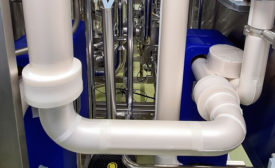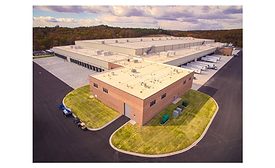Home » Keywords: » energy
Items Tagged with 'energy'
ARTICLES
Chilling/Freezing
Upgrade Chilling Equipment to Industrial Heat Pumps
Industrial heat pumps provide chilling and freezing, and reclaim the heat energy lost in chilling to save money on heating water for cooking and cleaning—but is retrofitting possible?
October 10, 2024
Company News
Tempo Beverages Ltd. Taps Brenmiller Energy for Thermal Energy Storage System
June 17, 2024
Funding/Investments
Kraft Heinz Seeks $170 million for Clean Energy Projects at 10 U.S. Plants
March 26, 2024
Market Research
Research Reveals Energy Concerns Impacting Business Competitiveness, the Workforce and Decarbonization
March 20, 2023
A Practical, No-Regret First Step to Complete Decarbonization
Setting an achievable ‘net-zero’ emissions goal is possible, however, it may require companies to lean less on renewables and more on a facility’s waste heat to make up the difference.
January 9, 2023
Insulating pipes
Hygienic process insulation solves dairy coop condensation issues, saves energy
Kamataka Milk Producers replaced aging and cracking foam and nitrile rubber insulation, reducing the potential for bacterial cross contamination
September 22, 2021
Sustainability
Sustainability has its rewards—tangible and intangible
Suppliers and food processors work together to create projects that save energy and money—and show they’re responsible corporate citizens
March 4, 2021
Elevate your expertise in food engineering with unparalleled insights and connections.
Get the latest industry updates tailored your way.
JOIN TODAY!Copyright ©2025. All Rights Reserved BNP Media.
Design, CMS, Hosting & Web Development :: ePublishing










